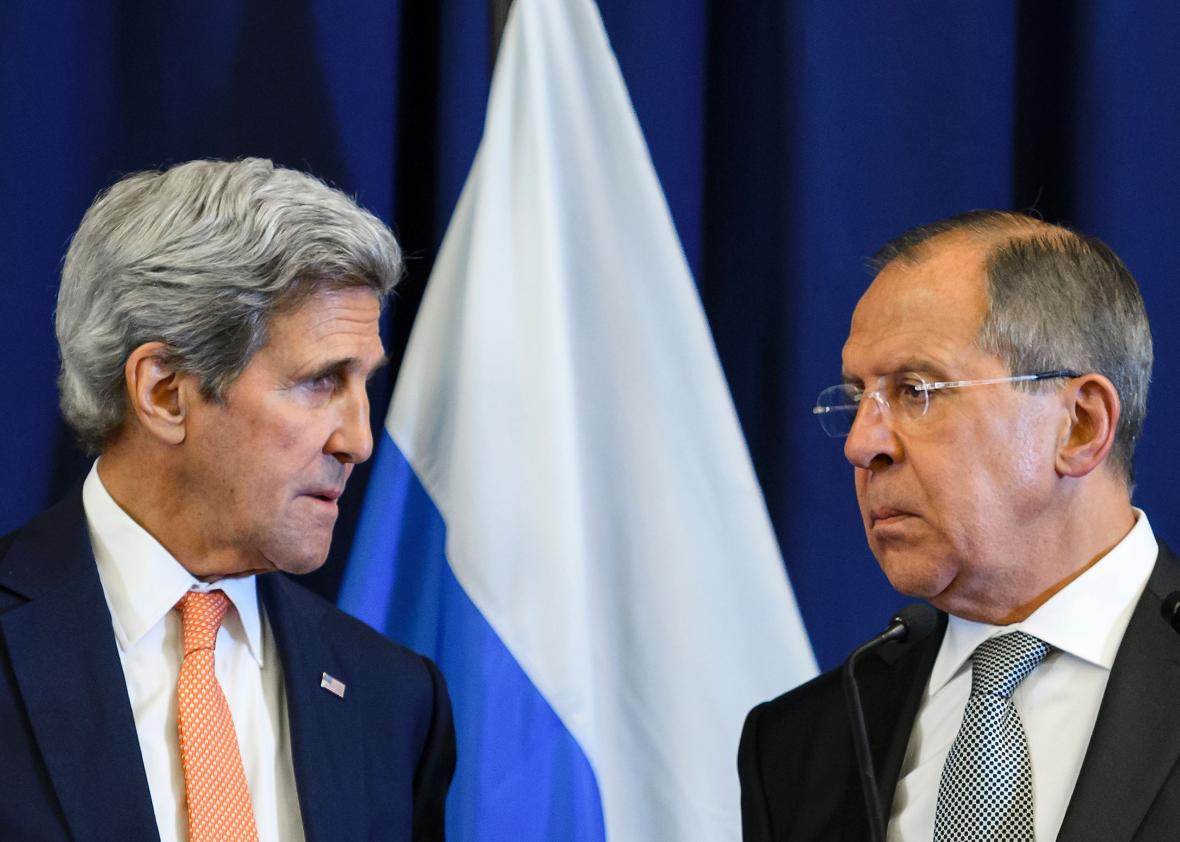There was cautious optimism on Saturday about the temporary halt in the Syria war that was brokered by the United States and Russia. But there was also lots of skepticism as air strikes hours after the breakthrough deal was announced sparked doubts about whether any agreement could really hold. To be fair, the nationwide truce isn’t supposed to begin until sundown on Monday. Still, the fact that what everyone believes to have been Russian planes bombed a marketplace in northwestern Syria hours after the landmark U.S.-Russia deal was reached didn’t seem to be the biggest symbol of goodwill.
Even Secretary of State John Kerry, after 13 hours of negotiations, appeared to recognize that there are no guarantees any ceasefire deal will actually be followed. He was sure to emphasize though that, if everyone does what they’re supposed to, it could mark a turning point in the conflict that has raged for more than five years.
“We believe the plan as it is set forth—if implemented, if followed—has the ability to provide a turning point, a moment of change,” Kerry said.
The broad goals of the ceasefire include increasing access to humanitarian aid as well as a resumption of the truce between the warring sides so that the peace process being mediated by the United Nations can restart.
If there is actually a decrease in violence, then begins the most interesting part of this deal: the United States and Russia are set to establish “a Joint Implementation Center,” from which they will start sharing data and coordinate campaign to target ISIS and al-Qaida-linked militants.
In order to reach the deal, both Moscow and Washington had to put aside months of tension and distrust. And now they’ll each have to do their part, explains the New York Times. Russia must convince President Bashar al-Assad to hold back on its attacks in areas held by the opposition. For its part, the United States has to get the opposition groups to end any and all alliances with the al-Qaida-linked militants.
The Moscow-Washington cooperation portion of the agreement means the deal goes a bit further than other similar efforts in the past. And many of the details of the agreement are being kept secret to prevent sabotage. But there seem to be other clear problems, one of which is the agreement doesn’t make it clear why Assad’s government “would want to participate in a process that the United States insists is intended to lead to his departure,” notes the Washington Post. Plus the deal itself “appears to suffer from a fundamental imbalance common to the earlier efforts,” notes the Associated Press. If rebels violate the ceasefire then Russia could respond militarily but if Assad is the one to violate the truce, “the U.S. has no clear enforcement stick.”
